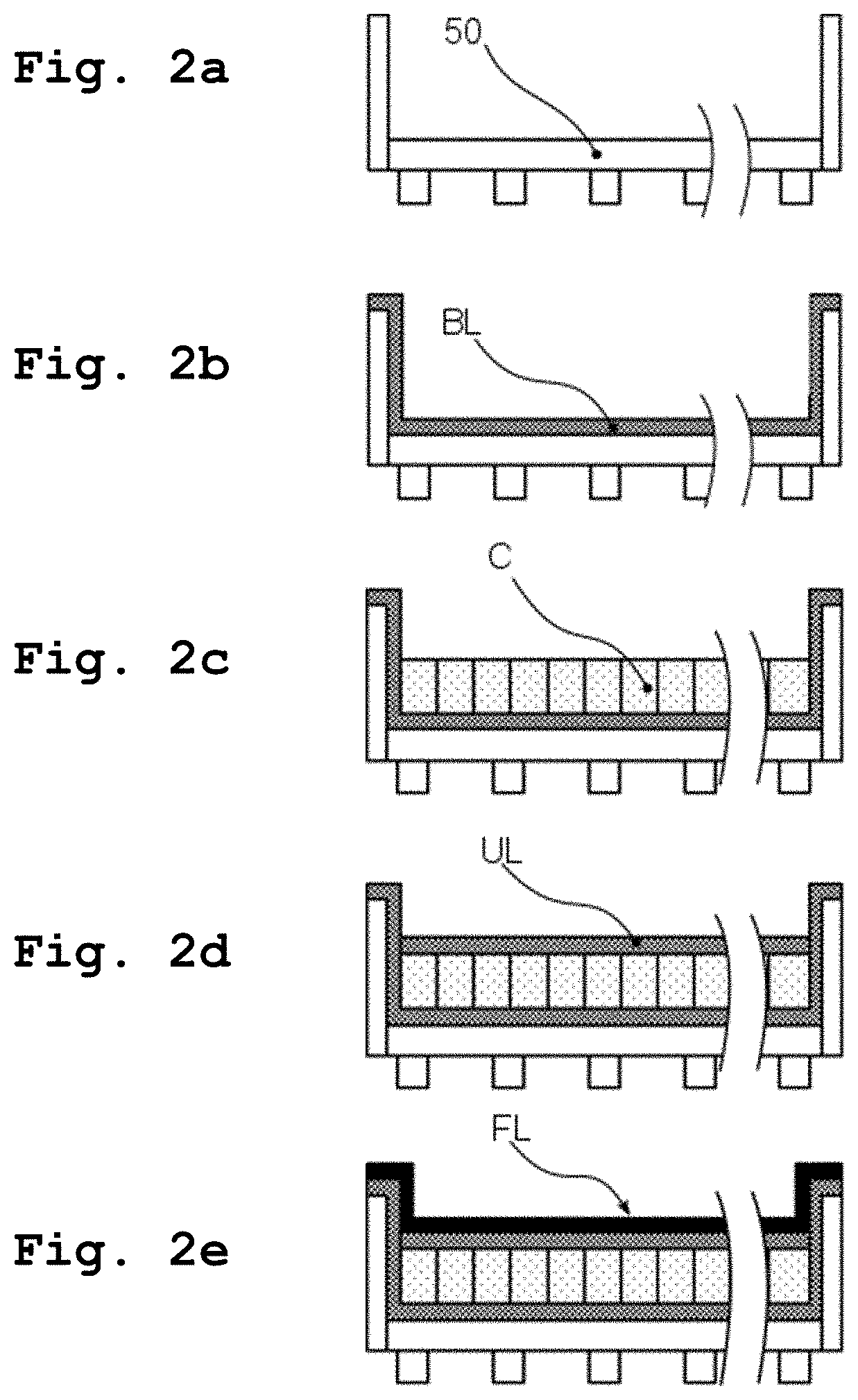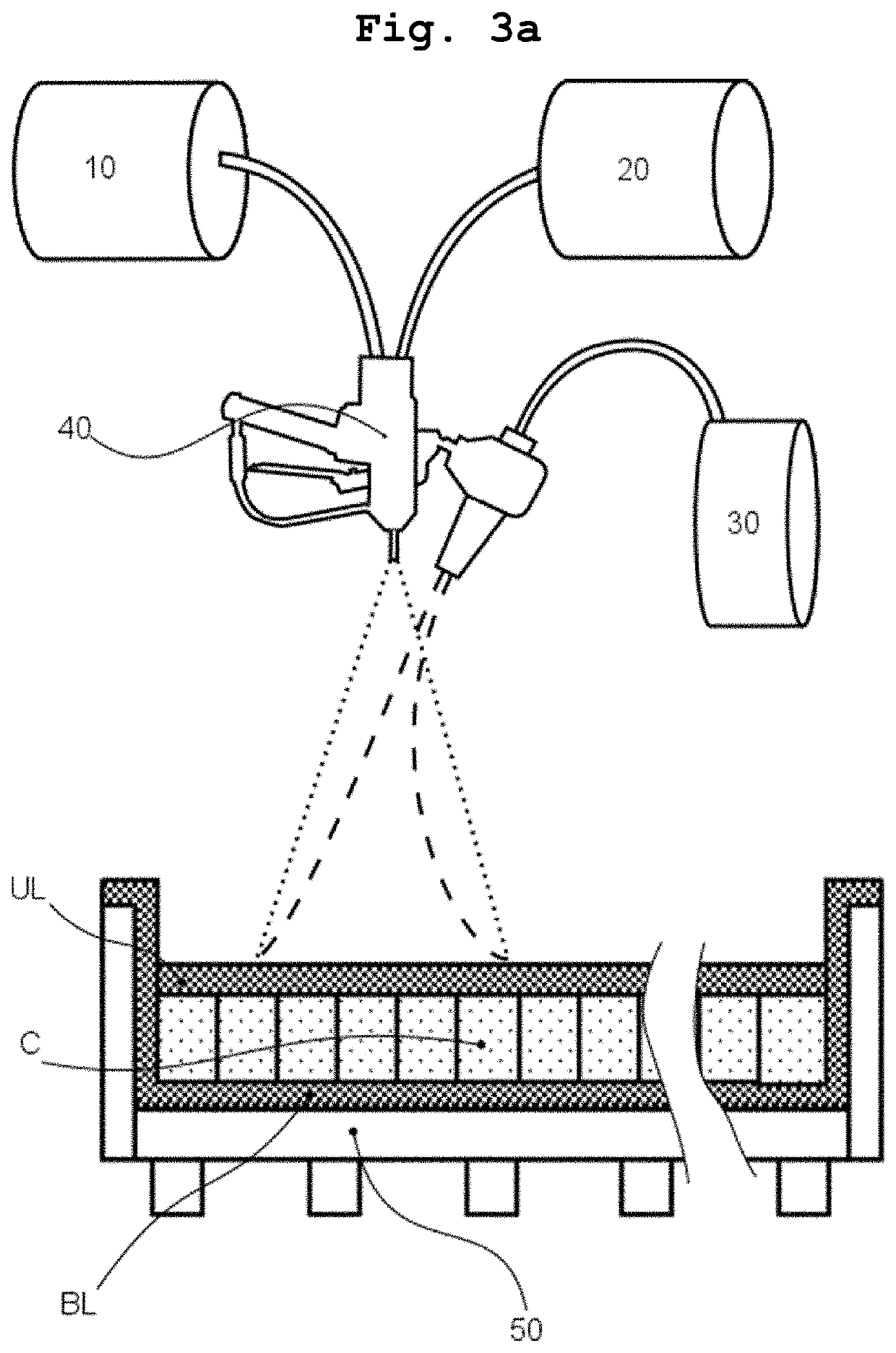Floating roof for tanks, fire retardant coating thereof, and method for their manufacture
a technology for floating roofs and tanks, applied in the direction of containers, stoppers, applications, etc., can solve the problems of uneven manufacturing surfaces, affecting the structural integrity of floating roofs, and fiber-reinforced resin materials showing differences in physical properties
- Summary
- Abstract
- Description
- Claims
- Application Information
AI Technical Summary
Benefits of technology
Problems solved by technology
Method used
Image
Examples
Embodiment Construction
[0076]FIG. 1 depicts a floating roof according to one aspect of the present invention, comprising a bottom layer BL, a core C, and an upper layer UL arranged in a sandwich structure. In this embodiment, a fire-retardant top layer FL is provided on top of the upper layer UL, and the upper layer UL serves as substrate for the fire-retardant top layer (FL).
[0077]The steps for manufacturing a floating roof according to one embodiment of the present invention are depicted in FIG. 2a to FIG. 2f. First a mold 50 is constructed within the interior of a tank (not shown), see FIG. 2a. The mold is typically constructed from melamine coated boards. The mold comprises a flat upper surface and a circumferential sidewall inside the tank. To ensure that the top surface of the mold has an even structure and that no resin can flow through the gaps between the boards, tapes (not shown) may be provided to cover the gaps.
[0078]Then the bottom layer BL made from a fiber-reinforced resin material is provi...
PUM
| Property | Measurement | Unit |
|---|---|---|
| length | aaaaa | aaaaa |
| length | aaaaa | aaaaa |
| volume resistivity | aaaaa | aaaaa |
Abstract
Description
Claims
Application Information
 Login to View More
Login to View More - R&D
- Intellectual Property
- Life Sciences
- Materials
- Tech Scout
- Unparalleled Data Quality
- Higher Quality Content
- 60% Fewer Hallucinations
Browse by: Latest US Patents, China's latest patents, Technical Efficacy Thesaurus, Application Domain, Technology Topic, Popular Technical Reports.
© 2025 PatSnap. All rights reserved.Legal|Privacy policy|Modern Slavery Act Transparency Statement|Sitemap|About US| Contact US: help@patsnap.com



